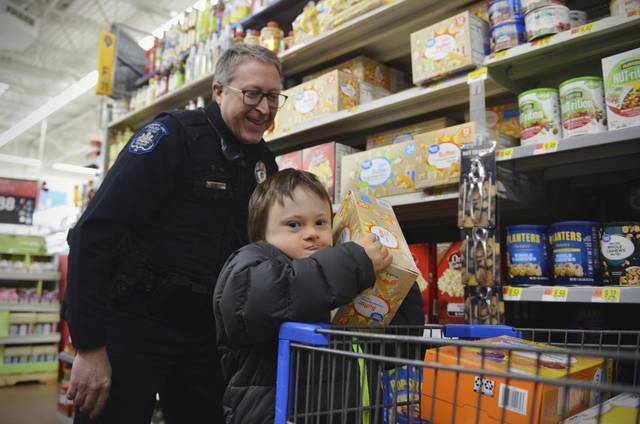Jay McDonald: Children's encounters with police are positive
The saying goes that children learn what they live.
If children meet police under normal circumstances, they’ll be set for life. That’s because they’ll experience encounters that are positive.
Encounters like school resource officers being there to assist students if there’s danger. Officers providing safety tips during school assemblies. DARE coordinators empowering students to make positive life choices. Maybe even knowing to go to an officer during a street fair if a child has been separated from family members.
In many communities, police help lead recreational sports leagues where kids gain confidence and learn teamwork.
This is what many children live — and it’s the experience that they should have. That’s because nearly all experiences with police are positive.
It’s disappointing, then, to see some try to muddy that water. Teaching kids to be hesitant around police, to fear police, teaching them to resist instructions from police, teaching them that they, themselves, might be in danger in an encounter does a disservice to kids.
And when such misguided direction comes from another influential person in a child’s life — their teacher — it’s all the more disappointing.
A Pittsburgh teacher recently provided a worksheet to first-grade students — first grade — that used an example of kids, Tom and Rob, running from police. Worse yet, the reading example had the police officer yell to his dog, “get them,” and the dog “gets” Tom and Rob.
It’s hard to say what would compel a teacher to go down so dark a path for a first-grade reading lesson. Perhaps he or she is upset about a traffic ticket. Perhaps someone in his or her family had a run-in with the law. Perhaps he or she aligns with the vocal political minority that oppose police just on basic principle these days.
None of these are acceptable reasons to teach impressionable kids to fear police officers.
Just as police officers have a responsibility to protect and serve our communities, teachers have a responsibility to educate students without instilling fear.
There’s enough out there in the world that negatively impacts police-community relations without teachers starting to harm the relationship in elementary school before it even had time to form.
The school assignment in question was from an English class, but here’s some math for all the adults out there: A study published in the Journal of Trauma and Acute Care Surgery, authored by Dr. William Bozeman of the Wake Forest Baptist Medical Center, reviewed over a million police calls. The study found that about 11% of police calls result in criminal arrests and less than 1% of those incidents result in use of force.
To be clear, that’s 1 in 1,100 total calls resulting in use of force, and 1 in 120 criminal arrests involving use of force.
Police aren’t running after kids or letting loose a police dog on them. Police are protecting and serving their communities and in the small number of cases where things get tense, they’re seeking out every last remedy to de-escalate the situation.
Kids learn what they live. Without outside influence, they’ll learn to have positive interactions with police, because that’s what they’ll encounter. Hopefully other teachers are taking notes, because we’re using our red pen to give the teacher in this case an “F.”
Remove the ads from your TribLIVE reading experience but still support the journalists who create the content with TribLIVE Ad-Free.

